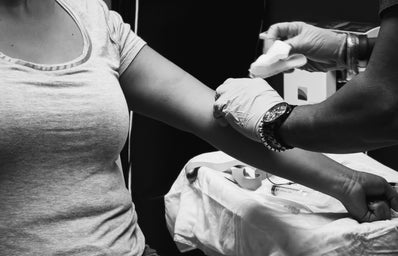Donating blood is a small but important way for you to help a stranger. In Finland, nearly 1,000 donations are needed in just one workday. In the past few weeks, while there has not been a significant dip in the numbers of donations, blood supplies have been low. The reason for that is an increase in the demand for blood, caused by the number of surgeries picking up again after a lull caused by the pandemic. The hospitals need blood to perform surgeries and to treat any victims of accidents with significant blood loss. With half a liter of your blood, you can help patients to recover from operations or accidents.
Who can donate?
There are a number of criteria that donors must meet for the collected blood to be optimal for recipients. Before you donate, you must fill a survey to check if you are fit for donation. A medical professional will then go through the answers with you to determine whether you can donate or not. For donating blood in Finland, here are some of the main concerns to keep in mind:
- you must have a Finnish personal identity code, and you must have lived in Finland (or some other EU or EFTA state or in the UK) at least for the past three months.
- first time donors must be aged 18-59.
- you must be healthy and well, not have had any serious diseases, and currently not be under a doctor’s follow up
- your weight should be between 50 kg and 200 kg– this rule is for your own safety, so that you are able to safely donate half a liter of your blood.
- you will be asked what medication you have taken within the last two weeks, including any occasional pain killers or allergy tablets. Medication does not necessarily prevent you from donating, but it is important to know what medicine or residues your blood might contain.
- travel to countries outside of EU/EFTA countries and the UK causes a temporary ban for blood donation, even outside of the pandemic.
I have low hemoglobin. Can I donate?
Limits for hemoglobin, that is, the amount of iron in your blood, are in place for the safety of blood donors and recipients. Donors’ hemoglobin concentration should be within acceptable levels: 125–175 g/l for women and 135–195 g/l for men. Your hemoglobin will be tested at the donation center with a small needle prick in your finger. The results are ready within a minute. Young women (aged 18-25) have an increased risk of low hemoglobin and are generally recommended to donate only once a year. However, if you have not donated yet, you can make it count whenever your blood group is in low supply. The blood service will give you iron supplements to help build back the hemoglobin after donation.
Does my blood group matter?
You might remember from school that blood groups determine whose blood a person can accept. While some blood groups are suitable for a larger group of people (with O negative being a universal donor), all groups are needed since all groups exist in society. Ideally, the proportion of donors from blood groups should match the proportion of blood recipients in the population. For example, the majority of people in Finland are A+, which means that blood suitable for this group is needed in huge volumes.
While the O, A, B, and AB groups (Rh factors negative or positive) are the most common, there are also rarer blood groups. For example, the U negative is a rare blood group present in people of African ethnicity. Currently, few people of African origin donate blood in Finland, yet there is demand for these blood groups in hospitals. If you do not know your blood group yet, you will find out after your first donation.
Where and when do I donate blood?
During the coronavirus pandemic, donors-to-be are advised to book an appointment before coming to a blood service point. This can be done on the official website of the Finnish Blood Service. In Helsinki, the most convenient location may be in Sanomatalo, next to the Central Railway Station, open all weekdays. Another option is the Blood Service Unit in Kivihaka. More locations, along with opening hours, can be scoped out on the official website. Remember to take your official photo ID (passport, driving license)!
Is it scary? Does it hurt?
It isn’t – or shouldn’t be – scary, because you are in safe hands: the staff present are trained professionals. If you tell them that you are nervous, they can help you. As for pain, when your hemoglobin is measured, a small needle will prick the skin of your fingertip. The prick is very quick, and only a droplet of blood is drawn. You will get a bandaid, but the amount of blood visible is next to nil, and as you press the wound the pain goes away in an instant.
If your hemoglobin levels are in check, blood will be taken from your arm (you can choose which arm). During this part, you might feel more nervous because the needle looks bigger and will stay in your arm for longer. The nurse will tell you when they insert the needle, but if you feel nervous or squeamish about blood, my advice is to simply look away and focus on something else. Once the needle is inserted and you start pumping, the needle is adjusted so that it doesn’t hurt – there is a chance you’ll barely feel it, and there is definitely no sting. During the donation, you simply flex and unflex your fist – as if pressing a stress ball. The process takes 5-10 minutes. There is always medical personnel ready to jump in should you start feeling unwell or uncomfortable.
After the donation, you can rest in your seat and then stay in the lounge area until you feel steady enough to leave. Afterward, you should drink plenty of water and take it easy for the rest of the day – just in case.
More information:
Finnish Blood services: How blood is donated?
Take the eligibility test “Can I donate?”
Consider also donating blood stem cells to treat diseases such as leukemia.


